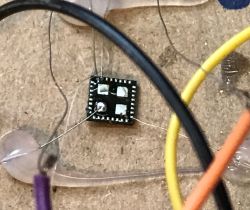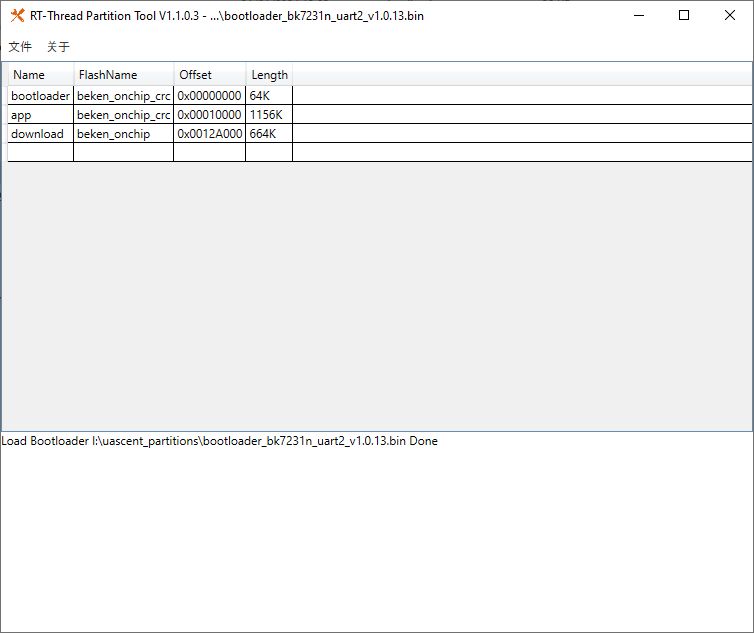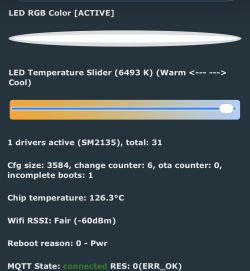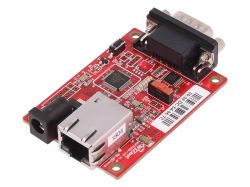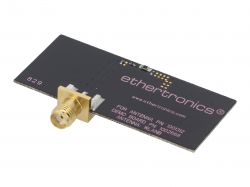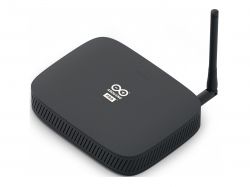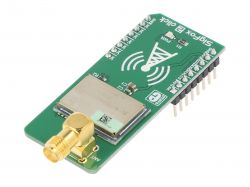
In today's world we can increasingly encounter all kinds of intelligent devices and systems. Their task is quite simple - to make people's lives more efficient and easier. Voice controllers, intelligent lighting systems, sockets that monitor power consumption, sensors of environmental conditions - all these devices qualify for the concept of the so-called Internet of Things (IoT). In this article we will take a look at the most popular communication standards used in such applications.
1. What is the IoT and how does it work
2. What communication standards does the IoT use
3. Applications of the IoT in the home and work
4. What devices can enter the IoT network
According to the definition, the Internet of Things is a digital network formed by interconnected objects and at the same time a network that connects to the physical world. This statement was first used by Kevin Ashton, the British entrepreneur who launched the IoT trend in 1999. In other words, we can describe the Internet of Things as interconnected devices that can collect data, analyse it and share it with other devices . An example of this would be an intelligent ventilation and heating system in a large enterprise. Distributed throughout the facility, sensors can collect data on environmental conditions during production processes as well as in offices or warehouses. Connected to them, the controllers of air handling units, infrared heaters and boilers can respond to the collected data , adjusting their parameters in real time to maintain temperature, humidity or oxygen levels in accordance with factory standards.
HOW DOES THE IOT WORK? The IoT ecosystem is built from smart devices that support a specific type of communication, usually wireless . These include hardware such as microcomputers , sensors and communication equipment, to collect, send and act on data . Internet of Things devices share the data they collect by connecting to other, superior systems for analysis and processing. Superordinate devices can also communicate with other data-collecting elements, so that together they create a huge . common IoT system . The hardware that makes up the Internet of Things does most of the work without human intervention, although humans can interact with them - for example, configure them, give them instructions or access data .
HOW DO IOT DEVICES COMMUNICATE? IoT devices are connected to each other usually via a WI-FI network . This is a very convenient solution, but sometimes this type of communication is form over substance. In addition, there are times when the equipment being launched is not within range of any network. Then we have to use another type of communication. Therefore, in addition to the most popular communication protocols for IoT networks, it is also worth learning about the more niche solutions.
WIFI in IoT installations The absolute hegemon, when it comes to means of communication between IoT devices is the aforementioned WI-FI. A typical WI-FI connection for data exchange uses radio waves at specific frequencies - the most popular being 2,4GHz and 5GHz , but also increasingly common is 6GHz, which provides as much as 1200MHz of bandwidth . WI-FI is typically used by those most advanced components likely to be part of an IoT system - smartphones, computers and microcomputers . The most popular modules supporting the WiFi standard are certainly ESP8266 and ESP32 .
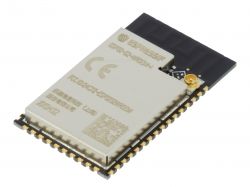
. There are many WI- modules available from TME.
Bluetooth
Bluetooth is one of the most widely used short-range communication protocols . A device communicating via this interface can transmit data over a distance from one metre to as much as 100m , depending on the power class. This is a closely related parameter to range, determining the output power of the transmitter. There are three power classes - class 1 - power 100 mW (20 dBm), maximum range: 100 m, class 2 - power 2.5 mW (4 dBm), maximum range: 10 m, class 3 - power 1 mW (0 dBm), maximum range: 1 m . Bluetooth is a standard Internet of Things protocol that uses radio waves (typically 2.4GHz) as a data carrier, similar to WI-FI. Bluetooth is a relatively secure communication standard, ideal for mobile solutions that do not necessarily need high data throughput The short range and low power are characteristics of Bluetooth. Also worth mentioning is BLE, or Bluetooth Low Energy . This is a low energy version of the Bluetooth protocol that is particularly popular in the IoT industry, mainly in small battery-powered devices .
Ethernet The IoT system is not only about wireless communication. IoT devices can also use a common wired connection type for communication, such as Ethernet . This is not the most convenient solution, as a cable must be connected to the device and routing it can be problematic in places. However, there are places where basing a new IoT network on just such a communication standard will be very easy. We are talking about larger companies and factories, where usually all areas already had a wired network connection. In order to modernise the company somewhat, it is possible to easily deploy Internet of Things devices based precisely on an Ethernet connection .
.
NFC One of the IoT communication protocols is also NFC. It is a network with little bandwidth and power, used to exchange data over short distances , typically up to about 4cm. Due to its nature, this type of communication is used in quite specific conditions and situations, for example in contactless payments. NFC can also be used in access control systems connected to a larger Internet of Things network .
Zigbee
ZigBee is a data transmission protocol similar to Bluetooth. It is used mainly in industrial settings . Here, too, 2.4GHz radio waves are used for data transmission . Zigbee is characterised by low power consumption, low bandwidth (up to 250 kbps) and a fairly large range of up to 100m. Although the Zigbee standard is already years old, its features make it ideal for IoT applications . Worth mentioning here is the mesh topology on which Zigbee is based . This means that the network is easy to build and maintain, as connected devices connect to each other in a direct, dynamic and non-hierarchical manner . In other words, each device connects to other devices available in range, so that the network organises itself.
Mobile telephony
Internet of Things devices can successfully transmit data over GSM cellular networks, 4G/LTE and 5G .. This will be particularly desirable, especially if you want to send information over long distances. However, it should be remembered that cellular transmission is quite current-consuming , Therefore, when designing this type of IoT solution, we should take into account permanent power access or communication only for a specific and limited time , which however disqualifies the cellular network from real-time systems. Despite this, mobile networks have one rather important advantage - reach . Today, thanks to mobile network providers, IoT devices using this solution can be placed virtually anywhere.
LoRaWAN LoRaWAN is one of the more popular IoT technologies, aimed primarily at devices where energy consumption matters . This protocol is characterised by low power consumption and low transmission speed (0.3kbs to 50kbs) . Implementation of LoRaWAN technology is advisable especially in small, often mobile, battery-powered devices. An example of this would be water level sensors water deployed at an open pit mine site. Scattered throughout the complex, the equipment connects to a central base that can be up to several kilometres away. This communication is usually one-way that is, the sensor transmits data to the base, usually several times a day. Unfortunately such a solution makes it impossible to view the data live but this means that a sensor placed in the field consumes much less energy and can be powered by batteries.
Sigfox
One of the more interesting IoT solutions is also the Sigfox communication standard, somewhat similar to LoRaWAN, although in essence the two solutions are quite different. Sigfox allows you to receive data from a very large number of devices without having to be permanently connected to the network. Placed in the field, the equipment sends small amounts of data, a single frame is a maximum of 26 bytes . Radio frequencies are used for communication - in Europe and the Middle East it is 868 MHz, while in North America it is 902 MHz. One of the key advantages of Sigfox is that the devices are not permanently tied to any base station, they send data into the ether so that it is received by the base station currently in range. In addition, Sigfox is based on operating in the cloud - this means that all calculations are done in the central units. The task of the devices in the field is just to collect the data from the sensors and send it to the network, so they require little energy to operate and can be battery-powered .
Z-.Wave
This is an emerging IoT wireless communication protocol, designed for home automation devices . Z-Wave is a low-power radio communication technology, operating in a band below 1GHz . It is capable of handling up to 232 devices simultaneously. Home automation components such as smart lights and sensors are the main application areas for this type of communication.
Application of Internet of Things devices
The Internet of Things helps people live and work more efficiently and conveniently. Such devices can be implemented in almost every aspect of our lives. In a domestic setting, we can easily create a system of smart sensors and actuators combined with a voice assistant . From now on, by issuing a single command, we can switch on lights, close windows or change the prevailing temperature in a room.
IoT devices are also extremely useful for industry. In addition to the aforementioned
WHAT CAN BE PART OF THE IOT? Part of the IoT can be virtually any device, and is only limited by your imagination. Everything can be smart in its own way - smart sensors that send data to the cloud, app-controlled thermostats, cameras whose image we can follow from the other side of the world, light bulbs whose emitted light colour can be changed using a watch. The world of IoT devices is constantly growing, already according to data there are more than 20 billion devices operating under this concept and one thing we can be sure of is that this number will continue to grow.
Source - Not just Wi-.Fi - wireless communication standards in IoT
[ADVERTISEMENT COORDINATION].



